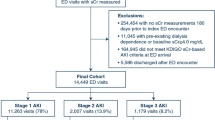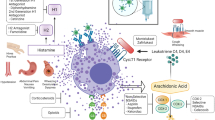Abstract
The purpose of preclinical tests is to identify the potential benefits and risks of new diagnostic or therapeutic products. Regarding iodinated contrast media (CM), LD50 tests were used extensively in the past. However, from both scientific and ethical perspectives it is today highly relevant to question the use of LD50 tests. Due to species differences and the very high volume of CM needed to kill half of the animals, such tests are not sensitive enough to differentiate between modern nonionic CM. Further, they are not very predictive in terms of human tolerability. In other tests with more relevant end-points than death, overall tolerance to the new dimeric compound iodixanol (Visipaque), representing the latest step in the development of CM, has been shown to be higher than to tire nonionic monomers. Clinical experience has shown that the physiological parameters often stay closer to baseline alter Visipaque than after administration of conventional CM.
Similar content being viewed by others
References
Almén T (1989) Relationship between chemical structure, animal toxicity and clinical adverse effects of contrast media. In: Enge I, Edgren J (eds) Patient Safety and Adverse Events in Contrast Medium Examinations. Excerpta Medica International Congress Series 816, Elsevier Sciences Publisher, Amsterdam, pp 25–45
Almén T (1969) Contrast agent design. Some aspects on the synthesis of water-soluble contrast agents of low osmolality. J Theor Biol 24:216–226
Almén T (1985) Development of nonionic contrast media. Invest Radiol 20:S2-S9
Karlsson JOG, Gregersen M, Refsum H (1995) Visipaque is isotonic to human and rat blood plasma. Acta Radiol Suppl 399,39–42
de Haen C, Morisetti A, Bertani F, Tirone P (1994) The factor time in acute intravenous toxicity studies of contrast media. Invest Radiol 29:S108-S110
Morisetti A, Tirone P, Luzzani F, de Haen C (1994) Toxicological safety assessment of iomeprol, a new X-ray contrast agent. Eur J Radiol 18:S21-S31
Trevan JW (1927) The error of determination of toxicity. Proc R Soc Lond (Biol) 101:483–514
Katayama H, Yamaguchi K, Kozuka T, Takashima, Seez P, Matsuura K (1990) Adverse reaction to ionic and nonionic contrast media. A report from the Japanese Committee on Safety of Contrast Media. Radiology 175:621–628
Russel WMS, Burch RE (1959) The principles of Human Experimental Technique, Meuthen, London
Rang HP, Dale MM (1987) Pharmacology, Churchill Livingstone, Edinburgh
Ekwall B, Bondesson I, Castell JV, Gomez-Lecho'n MJ, Helberg S, Högberg J, Jover R, Ponsoda X, Rombert L, Stenberg K, Walum E (1989) Cytotoxicity evaluation of the first ten MEIC chemicals: acute lethal toxicity in man predicted by cytotoxicity in five cellular assays and by oral LD50 tests in rodents. Alternative to Laboratory Animals 17:83–100
Speck U (1994) Principles and aims of preclinical testing. Invest Radiol 29:S15-S20
Heglund IF, Blazak W, Michelet ÅA, Furuhama K, Holtz E (1995) Preclinical pharmacokinetics and general toxicology of iodixanol. Acta Radiol Suppl 399,69–82
Hull RM (1995) Guideline limit volumes for dosing animals in the preclinical stage of safety evaluation. Human Exp Toxicol 14:305–307
Michelet AA (1987) Effects of intravascular contrast media on the blood-brain barrier. Comparison between iothalamate, iohexol, iopentol and iodixanol. Acta Radiol 28:329–333
Larsen LE, Heglund IF, Fabian R, Walday P, Blazak WF (1995) Neural tolerance of iodixanol in mice and dogs after a single and repeated intracisternal administration. Acta Radiol Suppl 399, 238–243
Maly P, Sundgren P, Bååth L, Golman K, Walday P (1995) Adverse reactions in myelography. Correlation between animal research and clinical practice. Acta Radiol Suppl 399,230–237
Almén T (1987) Effects of iodixanol, iopentol, iohexol and metrizoate on femoral blood flow after injection into the femoral artery in the dog. Acta Radiol Suppl 370,69–72
Kløw NE, Mortensen E, Refsum H (1991) Left ventricular systolic and diastolic function during coronary arteriography before and after acute left ventricular failure in dogs. Acta Radiol 32:124–129
Bååth L, Besjakov J, Øksendal AN (1993) Calcium and sodium addition to non-ionic contrast media. Invest Radiol 28:223–227
Jynge P, Holten T, Øksendal AN (1993) Sodium-calcium balance and cardiac function with isotonic iodixanol: an experimental study in the isolated rat heart. Invest Radiol 28: 20–25
Dunkel JA, Bøkenes J, Karlsson JOG, Refsum H (1995) Cardiac effects of iodixanol compared to those of other non-ionic and ionic contrast media in the isolated rat heart. Acta Radiol Suppl 399,142–154
Morris TW, Dukovik D, Pagani E (1994) The effects of coronary injection of iodixanol, iopamidol, and ioxaglate on contractility and electrophysiology. Invest Radiol 29:S99-S101
Pedersen HK, Jacobsen EA, Refsum H (1994) Contrast-media induced ventricular fibrillation: An experimental study of the effects of dimeric contrast media during wedged catheter injection in dogs. Acad Radiol 1:136–144
Karlsson JOG, Gregersen M, Bøkeness J, Pugh ND, Griffith TM, Refsum H (1995) Nonionic dimers produce less vasodilation than nonionic monomers in vitro. Eur Radiol 5:S354 An Abstract
Pugh ND, Hutcheson IR, Edwards DH, Nossen JØ, Karlsson JOG, Griffith TM (1995) Angiographic contrast media relax isolated rabbit aorta through an endothelium-independent mechanism that may not depend on the presence of the iodine atom. Br J Radiol 68:23–26
Walday P, Heglund IF, Golman K, Cornacoff J, Holtz E (1995) Renal effects of iodixanol in experimental animals. Acta Radiol Suppl 399,204–212
Grynne BH, Bolstad B, Borch KW, Nossen JØ (1995) Main results from the first comparative clinical studies with Visipaque. Acta Radiol Suppl 399,265–270
Katz AM (1992) Physiology of the Heart. Raven Press Ltd, New York
Pugh ND, Sisson GRJ, Ruttley MST, Berg KJ, Nossen JØ, Eide H (1993) Iodixanol in femoral arteriography (phase III): A comparative double-blind parallel trial between iodixanol and iopromide. Clin Radiol 47:96–99
Verow P, Nossen JØ, Sheppick A, Kjærsgaard P (1995) A comparison of iodixanol with iopamidol in aorto-femoral angiography. Br J Radiol 68:973–978
Author information
Authors and Affiliations
Rights and permissions
About this article
Cite this article
Karlsson, J.O.G. Preclinical safety assessment of contrast media: predictive value. Eur. Radiol. 6 (Suppl 2), S3–S7 (1996). https://doi.org/10.1007/BF02342564
Issue Date:
DOI: https://doi.org/10.1007/BF02342564




